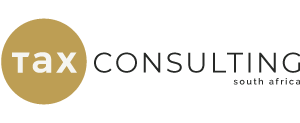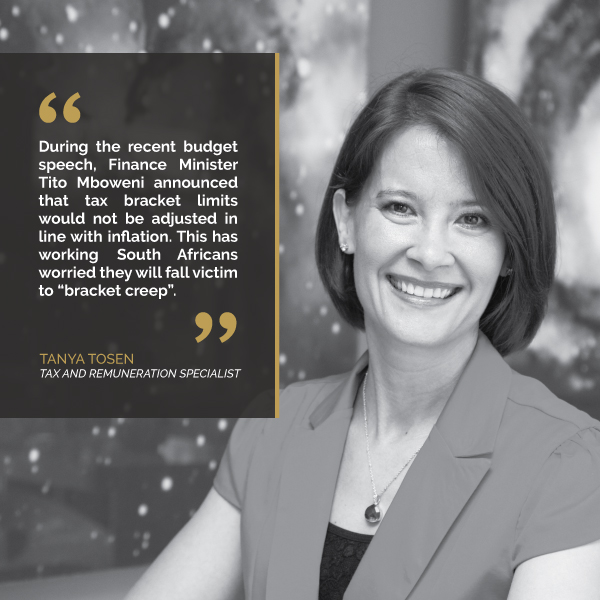TRAINING HELPS EMPLOYEES COPE WITH TAX BRACKET ANXIETY
During the recent budget speech, Finance Minister Tito Mboweni announced that tax bracket limits would not be adjusted in line with inflation. This has working South Africans worried they will fall victim to “bracket creep”.
According to Tanya Tosen, Tax and Remuneration Specialist at Tax Consulting South Africa, it’s not that bad. “Employees don’t understand how their tax is calculated, so they fear the worst,” she says. However, with a little professional tax training, employers can help their workers overcome this concern and keep them motivated.
What is bracket creep?
Bracket creep occurs when employees receive for example an annual inflationary pay increase which causes their income to fall in the next tax bracket. In prior years the inflationary adjustments made to tax brackets would have ensured that the person stay within the same tax bracket. The result in the new tax year is that, even though their purchasing power remains relatively fixed, SARS sees them as earning more and taxes them accordingly. “However,” says Tosen, “only those few who are pushed into a new bracket will pay more tax, and not as much as they think.”
Progressive tax system
The problem starts with misunderstanding how the country’s progressive tax system works. Many believe their entire income for the year is taxed according to the rate linked to the bracket within which their pay falls. Rather, each bracket represents a specific portion of their total pay and the tax on any given portion is calculated at its respective rate.
For example, using the 2019/2020 tax tables, let’s assume a person earns R325,000 per year. This doesn’t mean their entire pay will be taxed at 31%, the rate for that bracket. Instead, they will be taxed at 18% on the first R195,850; 26% for the portion between R195,851 and R305,850; and 31% only for the portion between R305,851 and R325,000.
SARS makes the calculation easier by defining a base tax amount for each bracket, which is the precalculated sum of the total tax for all preceding brackets. The tax on the last portion (in our example, 31% of the amount above R305,851) can simply be added to the provided base tax to arrive at the total tax payable. This tax liability will be reduced by an automatic rebate of R14,220, available to everyone under 65.
On this basis, it becomes clear that bracket creep affects just that portion of income that strays into a higher tax bracket. So a person earning R100 over the next tax bracket will only be taxed at the higher rate on that R100.
Training
Tax Consulting South Africa offers tax training to corporates to help anyone from employees to the HR director to the CEO understand these complex tax mechanics.
“A person who believes they are getting less out because of so-called bracket creep may feel they’re working at a loss,” reports Tosen. “We’ve found they are much more appreciative of their reward package when they have a good grasp of how tax affects their take-home pay.” Tosen encourages all employers to ensure their staff understand their tax liability.
Structuring benefits
Companies that offer flexible benefits can provide staff with even greater assurance. This remuneration model allows employees to restructure their contributions to benefits on demand, giving them control over their income’s effective value. “With assistance from a competent tax advisor,” says Tosen, “workers can channel funds to tax-deductible benefits to reduce the taxable income within their highest bracket.”
Leveraging benefits like the Employee Bursary Scheme, which lets employees fund their immediate family members’ educational expenses tax-free, or increasing contributions to an approved retirement fund, to name a few, are all legal means of minimizing one’s tax exposure.
Tosen encourages all employers to ensure their staff understand their tax liability as well as options on how to optimize their employees’ taxes where if possible.
AUTHOR

Tanya Tosen
Tax and Remuneration Specialist







